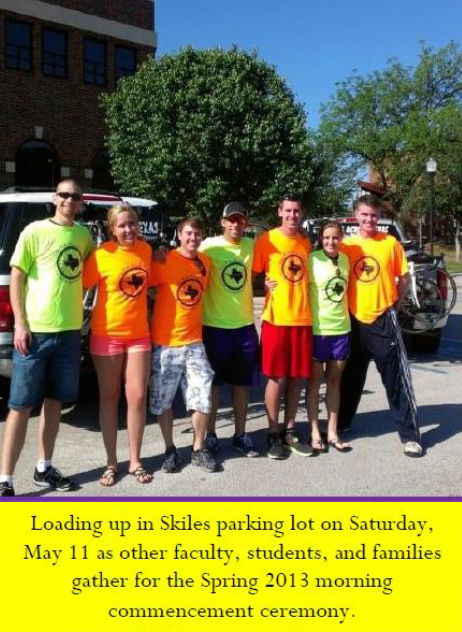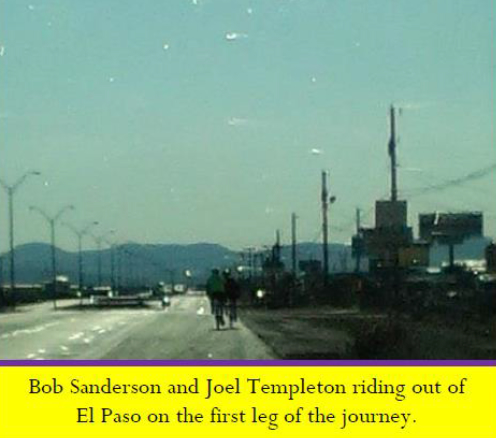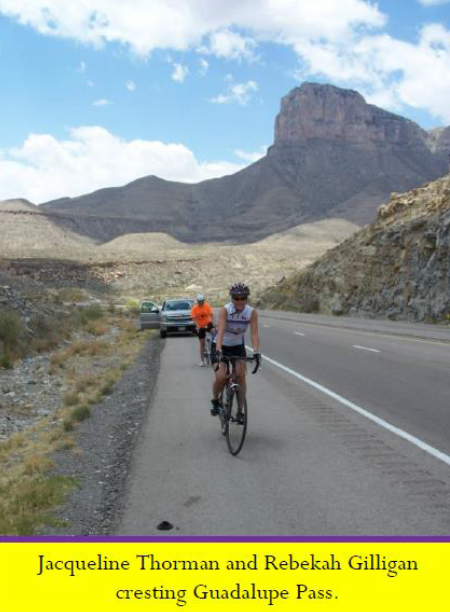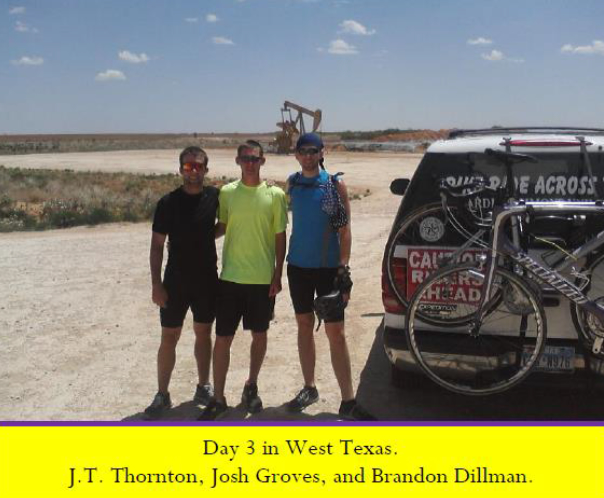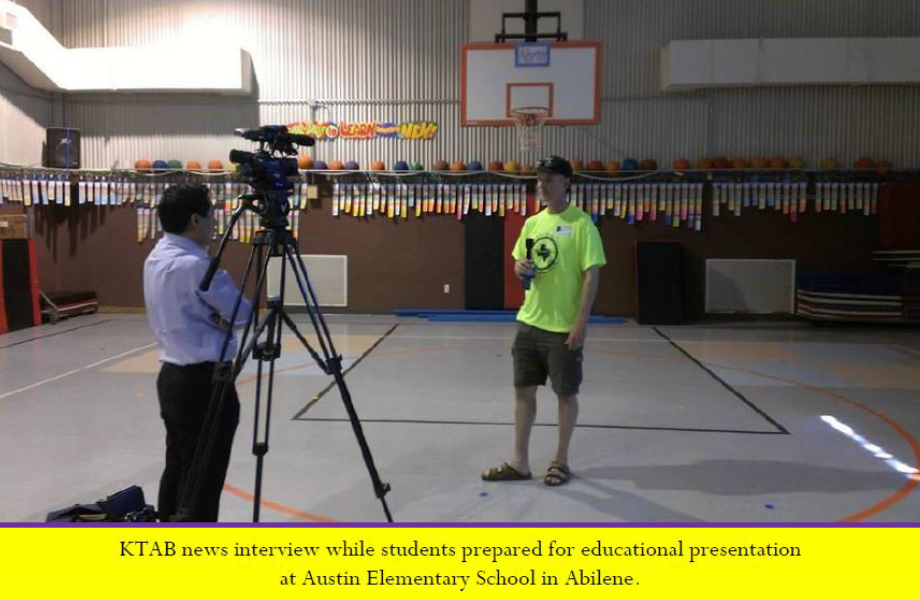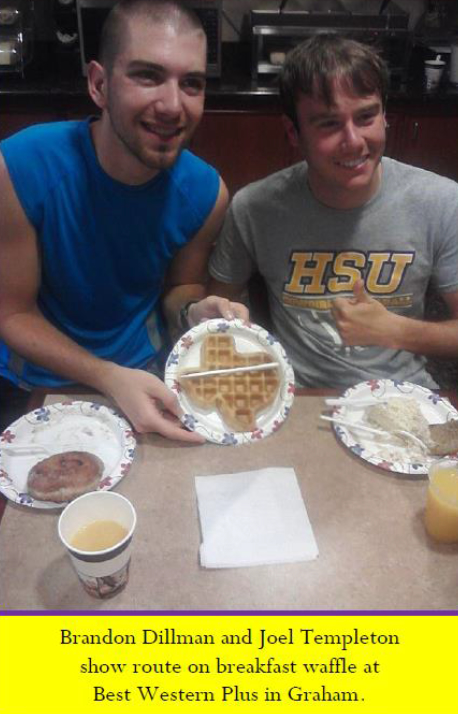Coleman Patterson, Ph.D.
Director of Leadership Studies and Professor of Management and Leadership
Hardin-Simmons University
Abilene, Texas
THE BIKE RIDE ACROSS TEXAS: A LEARNING LABORATORY
As a management and leadership professor, I am constantly looking for ways for my students to implement and practice the theories and principles that they read about and study in class.
Simulations, case studies, group projects, various types of research proposals, internships, and experiential learning activities are typical methods used by educators in my field. Most of those techniques are limited in their effectiveness—because many tend to be short-term, lack realism, require minimal buy-in and involvement, allow for free-riders, and incur a relatively low cost of failure. The challenge for educators is to find projects and experiences that allow students to truly experience the skills and principles of leadership, teamwork, and organization in a controlled educational environment.
I remember first presenting the idea to students on June 25, 2009. The date is memorable because it was the day that Michael Jackson died and we were watching the news reports on the television at the DFW airport while waiting to depart for summer school in Vienna, Austria.
The idea was for a student-organized “Bike Ride Across Texas” (BRAT) workshop class. Students would be responsible for all of the planning, organizing, and execution of the project. Unlike many classroom and extracurricular projects, this one would be real—more than just a simulated organization. The routes, equipment, food, safety, lodging, finances, training, and personnel requirements would all have to be determined and secured before the trip could happen. Drawing upon the leadership theories and concepts studied in their courses, student participants would have to use their communication, critical thinking, problem solving, teamwork, leadership, strategy, planning, and motivational skills to successfully complete the project. It seemed like an interesting and complex project for the students to tackle.
It took more than three years for the right combination of people, interest, and opportunity to come together. Beginning in January 2013, six students began meeting on Thursday mornings to work through the details of the project. Students slowly began charting the route (with the help of Texas DPS), securing bicycles, finding places to stay, soliciting donations, and getting their legs in shape. They also set up three visits to local schools during the mid-point rest break in Abilene to talk with elementary students about fitness, healthy living, and bicycle safety. They also arranged to participate in Abilene’s celebration of “National Bike to Work/School Day” at City Hall.
By the time the ride began, we had four bicycles loaned to us by Biketown in Abilene and had secured lodging at churches, hotels, bed and breakfasts, cabins, and a national park along the route. In total, we spent only $30 on lodging and bicycles for the entire trip due to generous donations of sponsoring churches and organizations across the state. A number of individual and corporate donations covered the remaining gas and food expenses.
We left campus on May 11th to drive to El Paso to spend the night in bunk beds in the gym of Grandview Baptist Church. We began a 100-mile ride to Guadalupe Mountains National Park on the morning of Sunday, May 12th. The nervousness and anxiety of the expedition quickly faded as we left El Paso and headed up and over the mountains on the outskirts of town. It didn’t’ take long to implement our planned system of riding and gain confidence on the road.
The six students and two faculty members traveled in two vehicles. We formed two teams of four riders. The plan was to have two people ride for 10 miles while two others supported the riders with a vehicle. While one team of riders was pedaling, the other team would drive 10 miles ahead and begin a similar 10-mile leg. This “leapfrog” relay method of riding would allow us to cover a lot of ground in a relatively short amount of time.
We took turns riding and providing support throughout the first day. By 3:30 p.m., we had reached Guadalupe Mountains National Park, our destination for the evening. A relaxed evening and cool night in tents (temperatures in the 40s) gave us time to reflect and gain confidence in our ability to complete the trip. We had 100 miles behind us and nearly 800 to go.
The second day on the road was mostly peaceful and quiet with episodes of heavy truck traffic while heading to Kermit, Texas. Arriving about 4 p.m., we had conquered another 100+ miles of the route and got to enjoy a relaxed evening at First Baptist Church—Kermit. We talked with a reporter from the local newspaper, uploaded lots of pictures and stories to Facebook, feasted on fajitas, and made a DQ run before going to sleep in the fellowship hall of the church.
The third day presented us with our first road construction detour and the need to fall back on contingency plans. Having already scanned the entire route using Google Earth, we quickly changed course and continued to roll ahead. A favorable wind and pleasant temperatures allowed us to go much further than anticipated. We made it almost all the way to Snyder, but returned to Andrews, Texas for a wonderful and luxurious night at the Casabella Bed and Breakfast.
On the fourth day, we made it back to the Hardin-Simmons University—a day earlier than expected. We were greeted on campus by a fantastic group of supporters who cheered on the students as they reached the mid-way point of the trip. A restful Thursday and school presentations on Friday helped prepare us for the second half of the journey.
On Saturday morning, we set out from Abilene to Graham where we spent the evening at the Best Western Plus and Hockaday Guest Ranch. Sunday’s ride ended at a rider’s family home in McKinney. Deer Lake Cabins in Scroggins, south of Mt. Vernon, was the layover point on Monday night before completing the trek to Texarkana on the following day. Heritage Baptist Church in Texarkana put us up in hotel rooms in Texarkana. Our university’s development office treated us to a celebration dinner at Outback Steakhouse in Texarkana.
On the final day, we drove back to Abilene to complete our journey. We were all genuinely sad that the adventure ended. We half-jokingly talked about pulling a “Forrest Gump” and ride past the state line and to the ocean.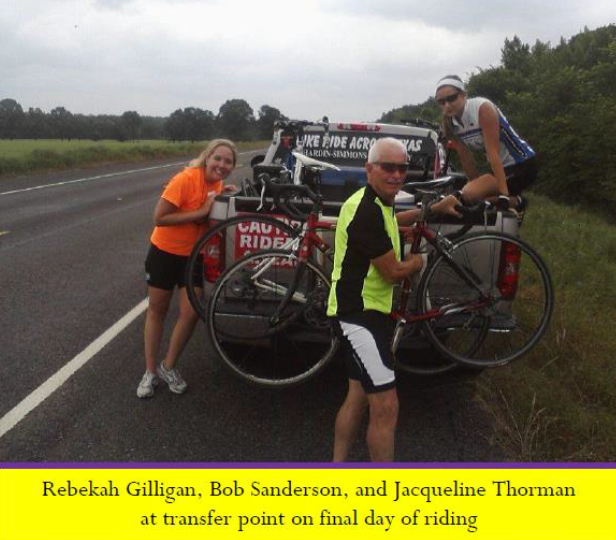
In all my years of teaching, working, and traveling with college students, the BRAT has turned out to be my all-time favorite educational experience. It was real, it was a challenge, it was a team effort, it was an adventure, it provided a well-deserved sense of accomplishment, and it was fun. We got to enjoy a beauty of Texas that is missed when speedily driving across the state in automobiles.
The 2013 BRAT provided us with many lessons. We learned first-hand about skills and principles of leadership, management, and teamwork, and even more about the joys, trials, and adventure of long-distance cycling and the beauty of Texas as reflected in its landscape and people.
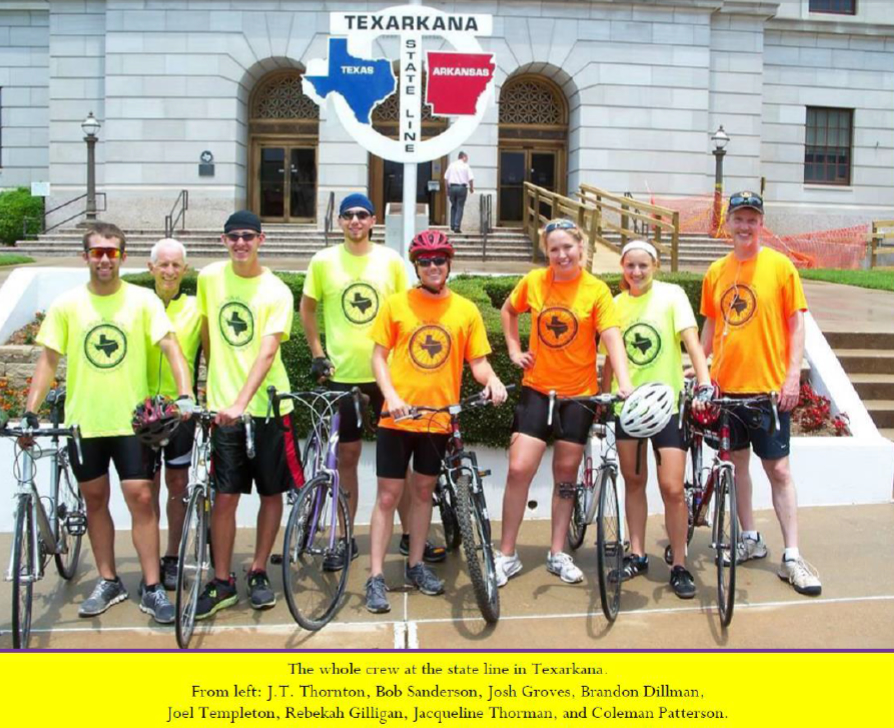
In future articles, I will describe some of the special experiences that made our first and subsequent rides across Texas interesting and meaningful. To learn more about our trans-Texas ride and see pictures and read stories from our adventure, visit www.BikeRideAcrossTexas.com.
